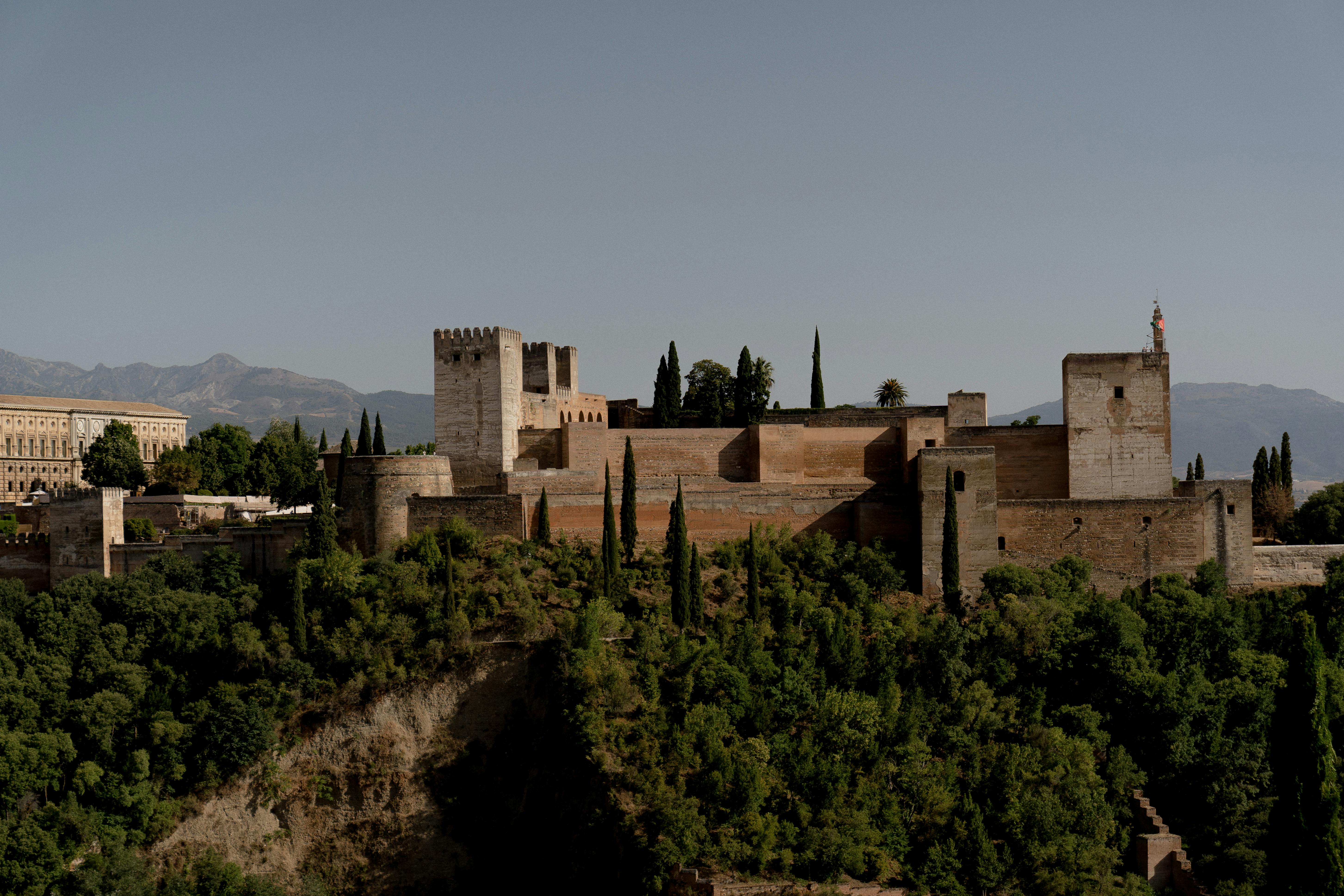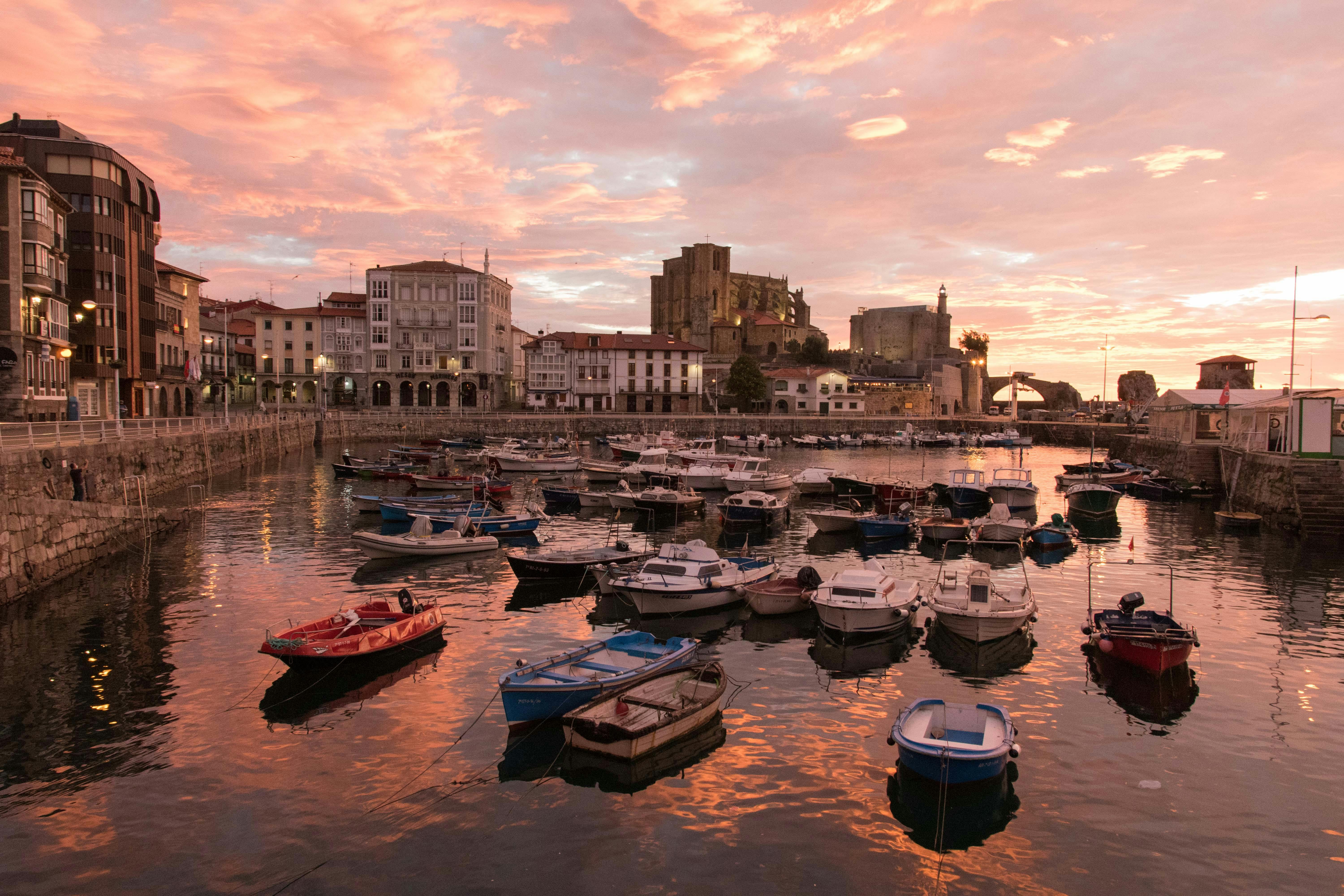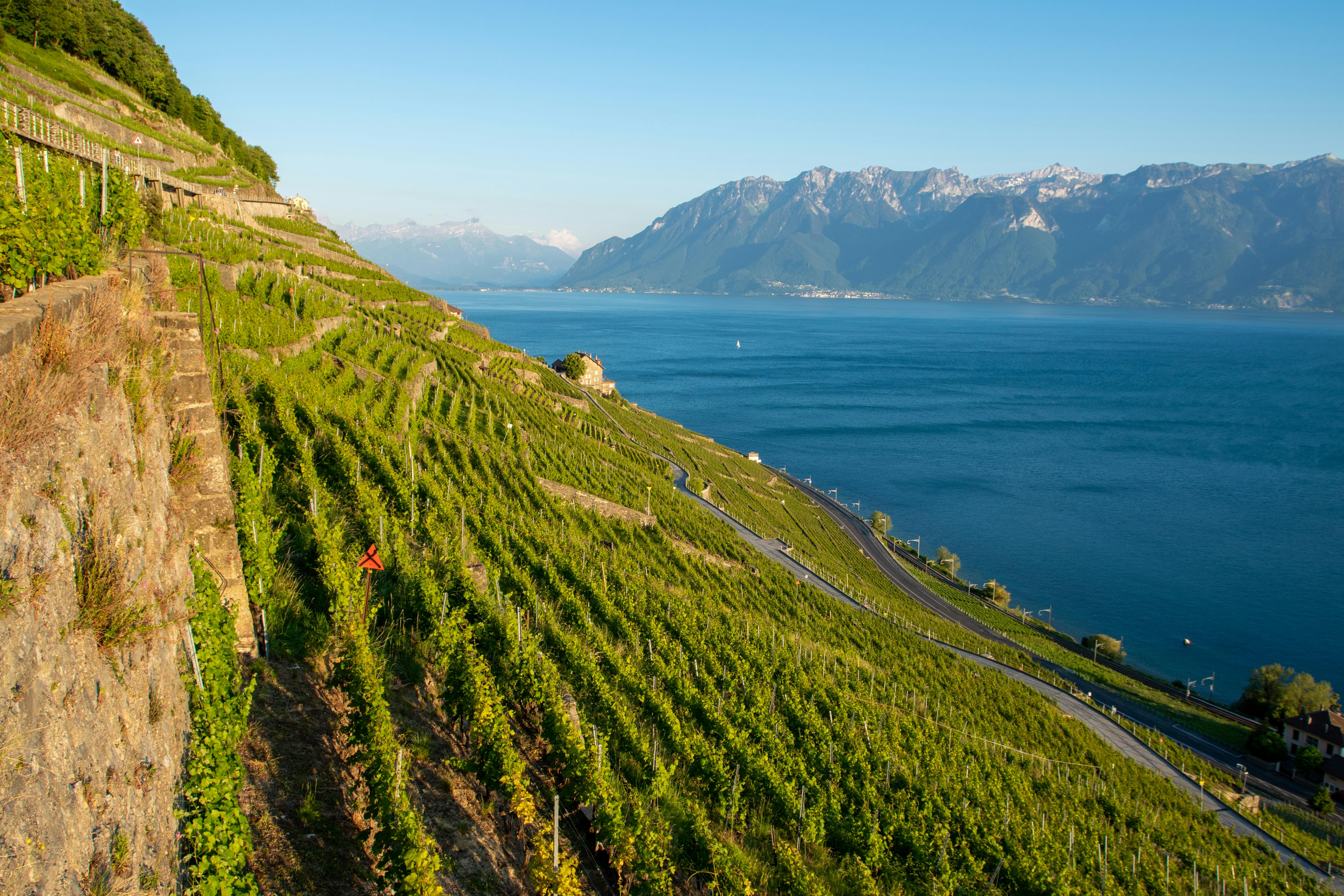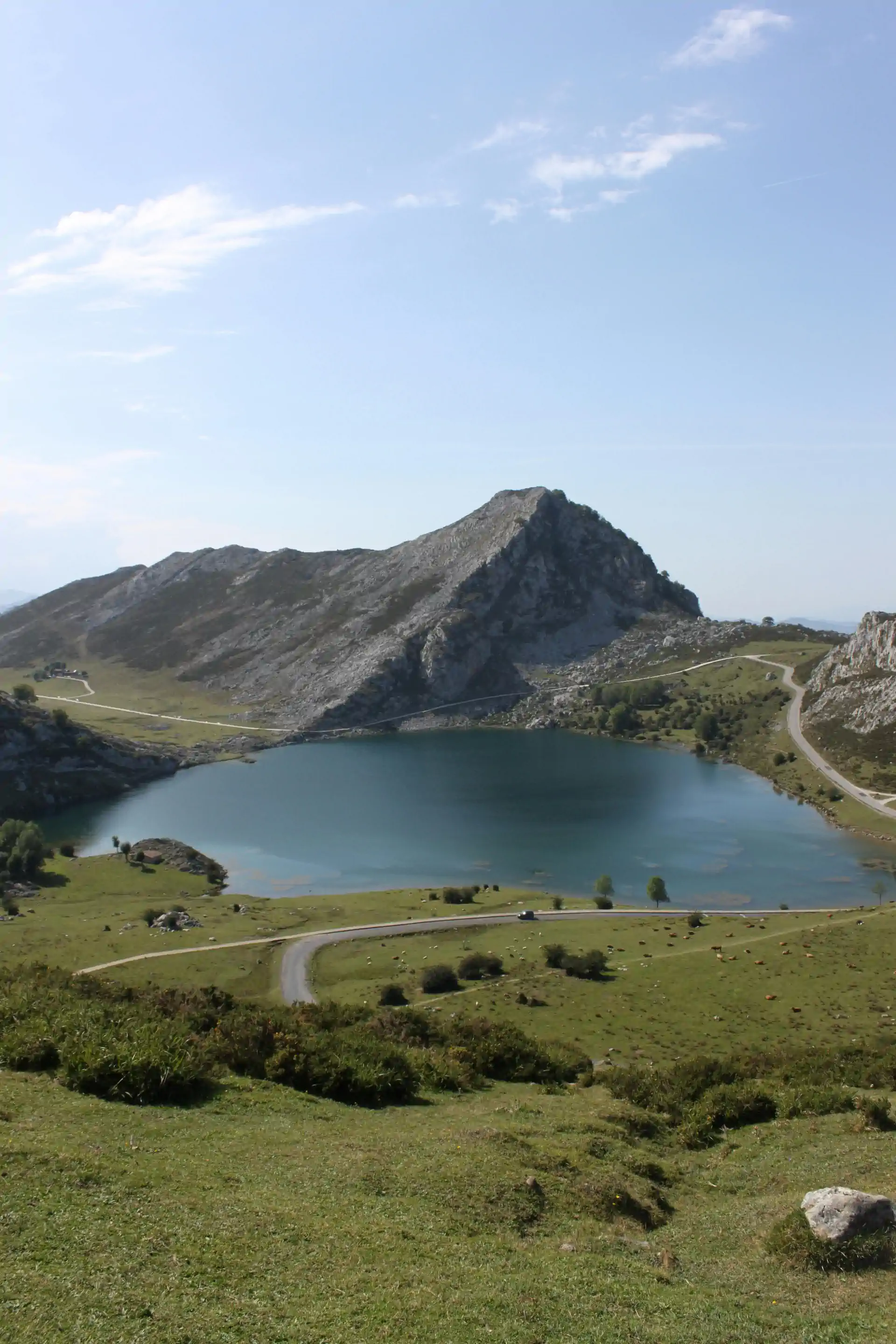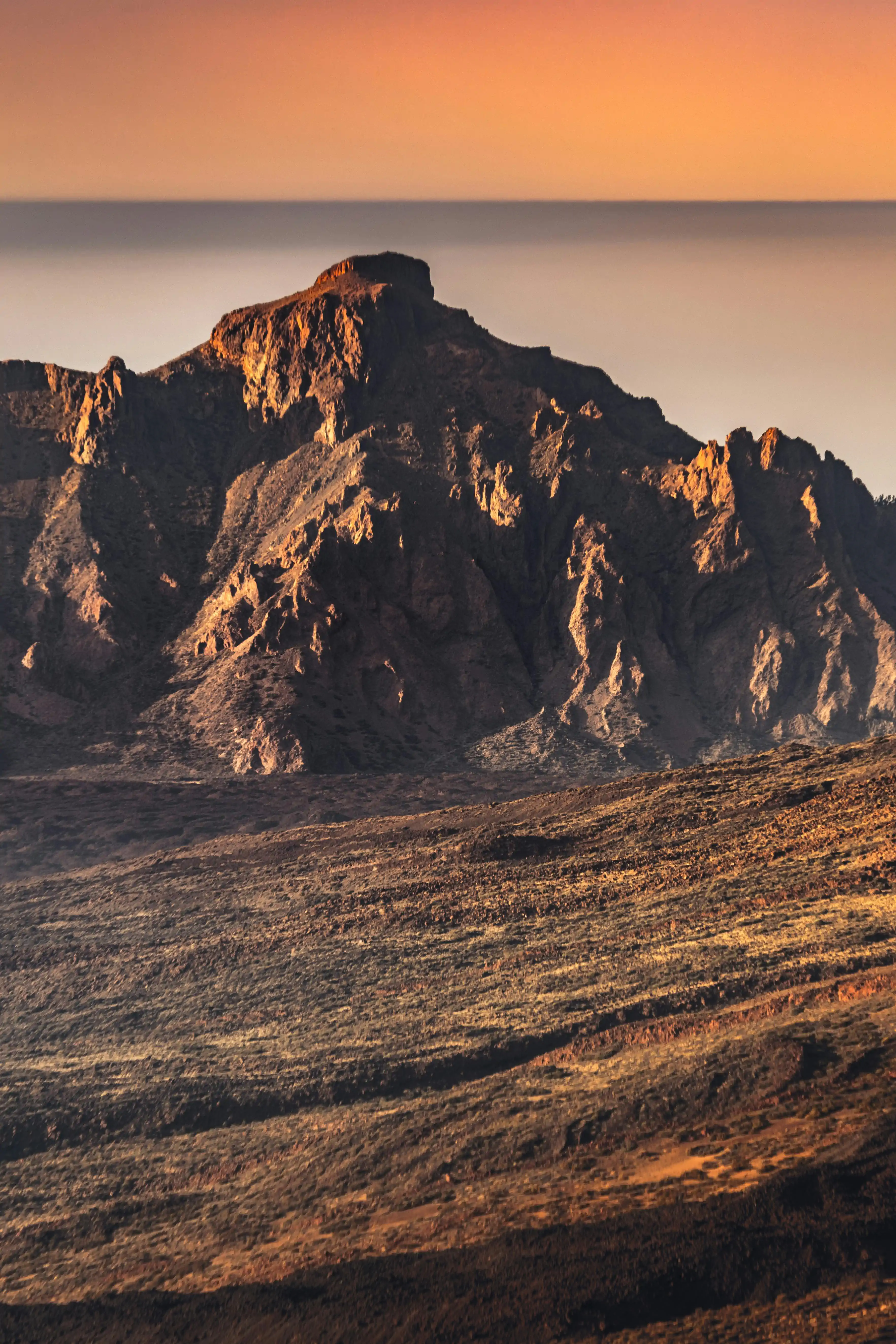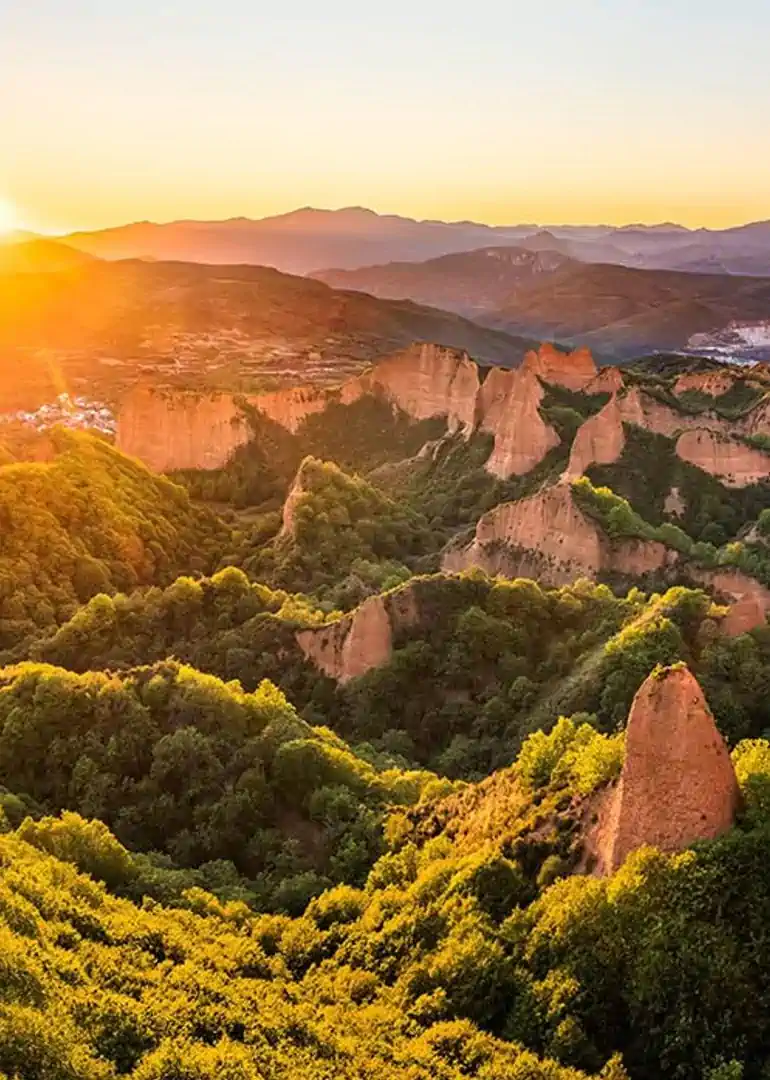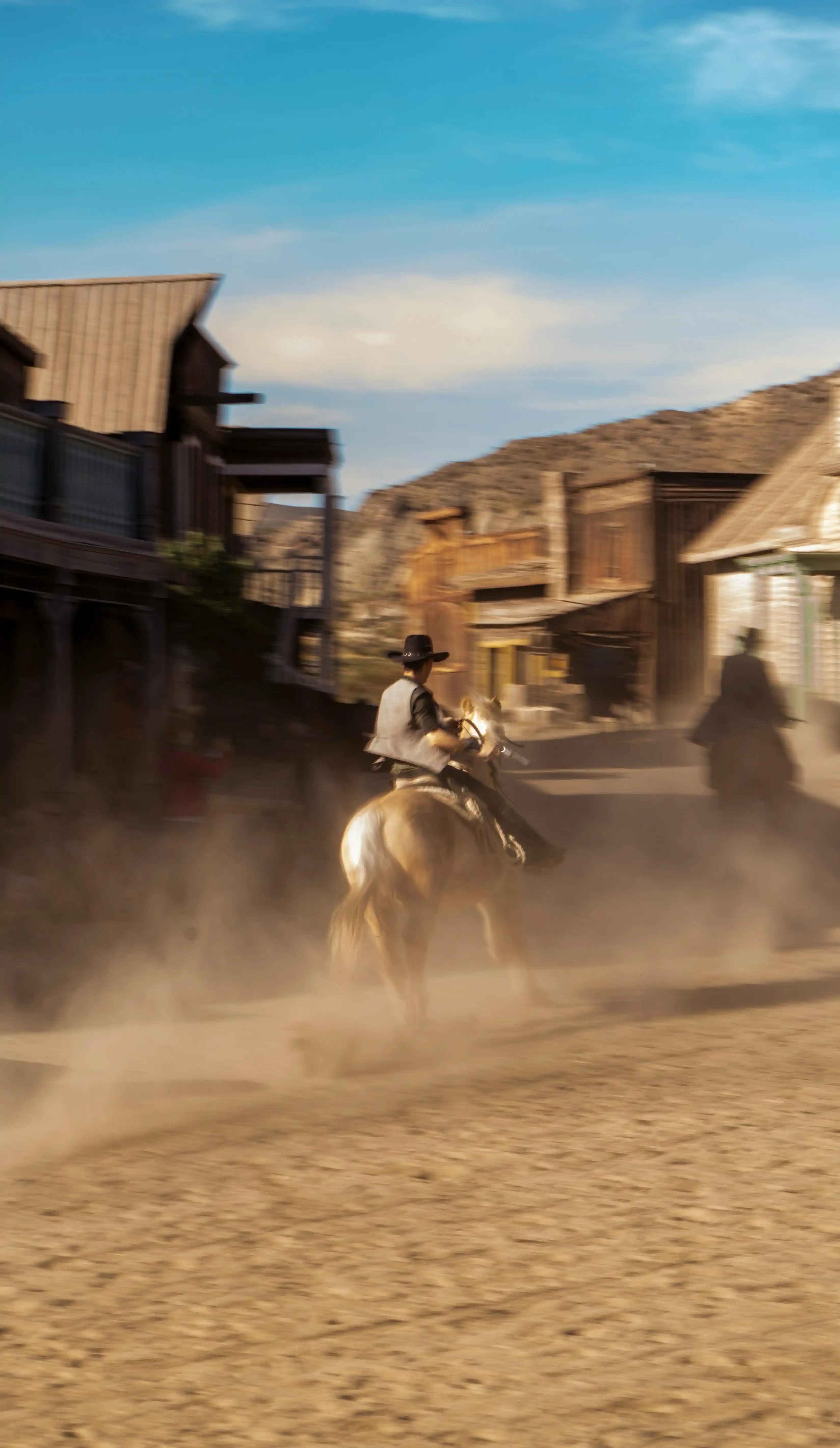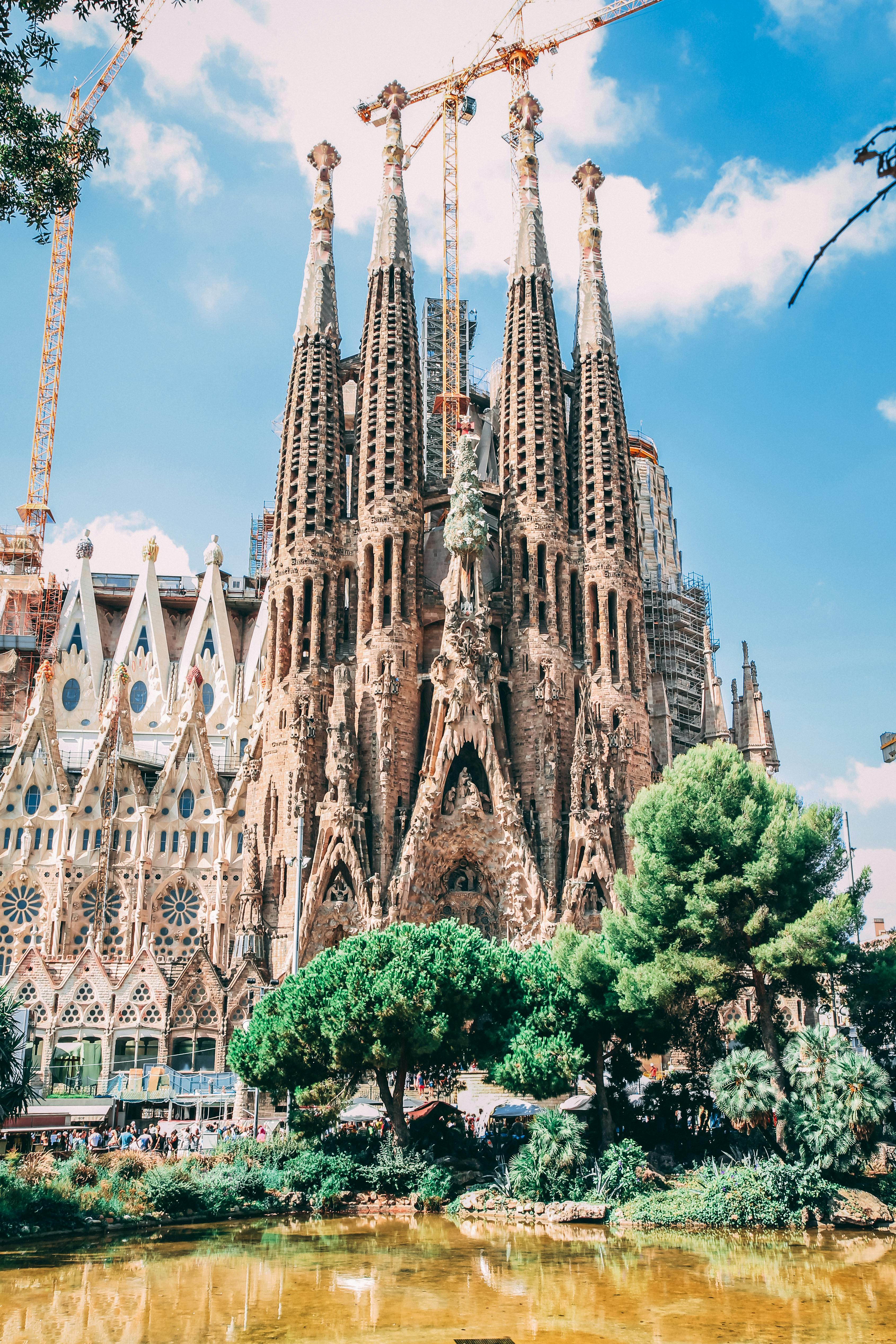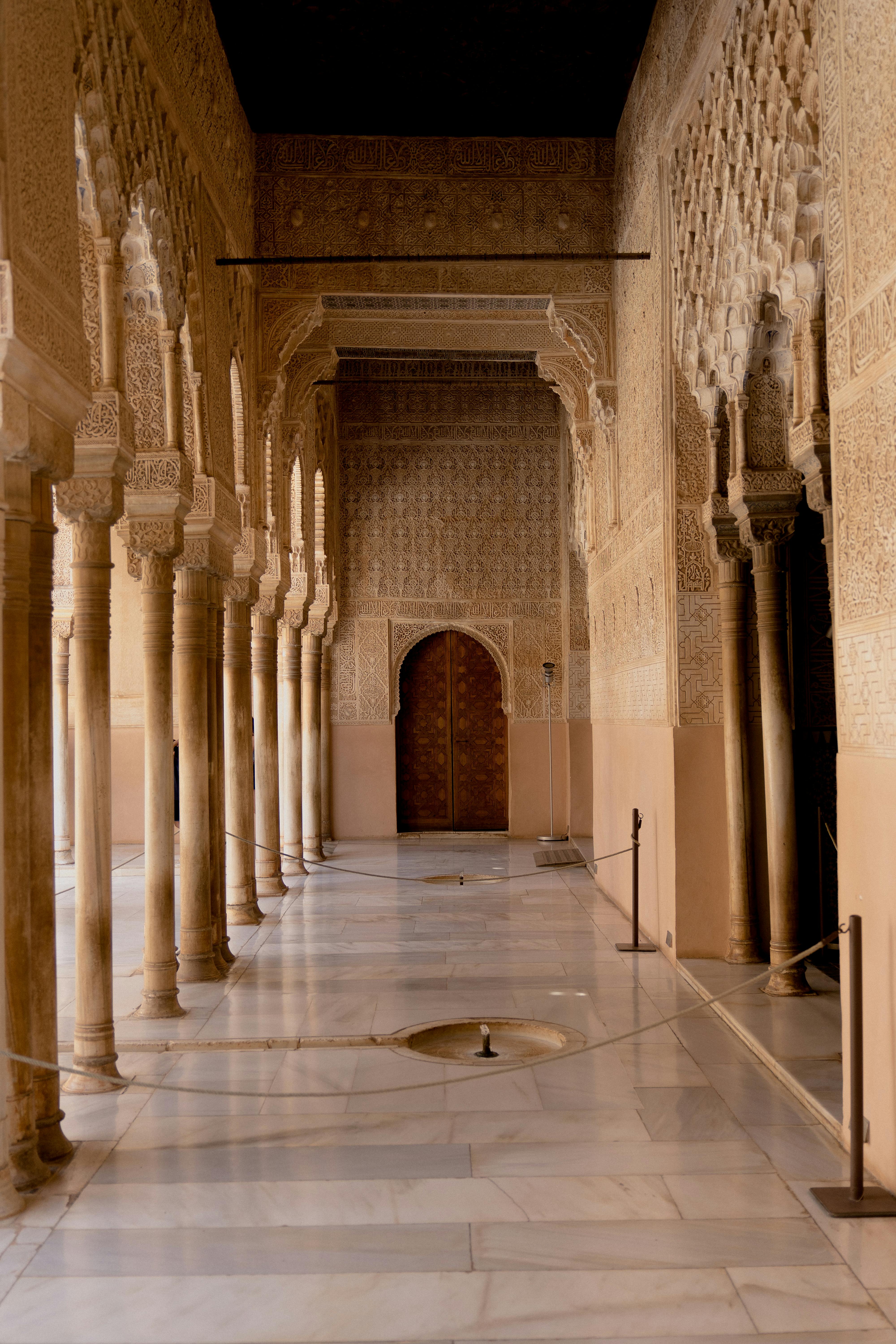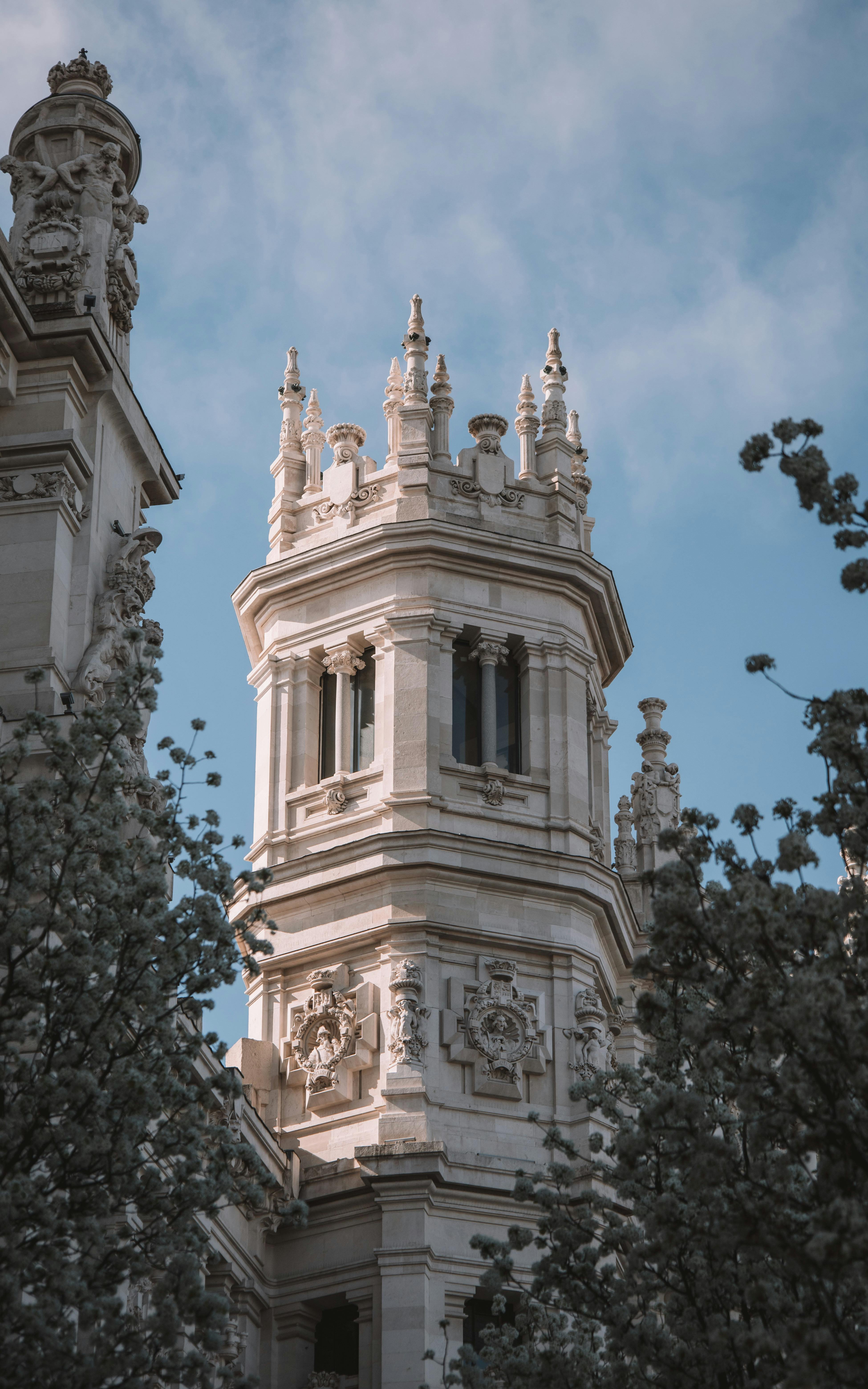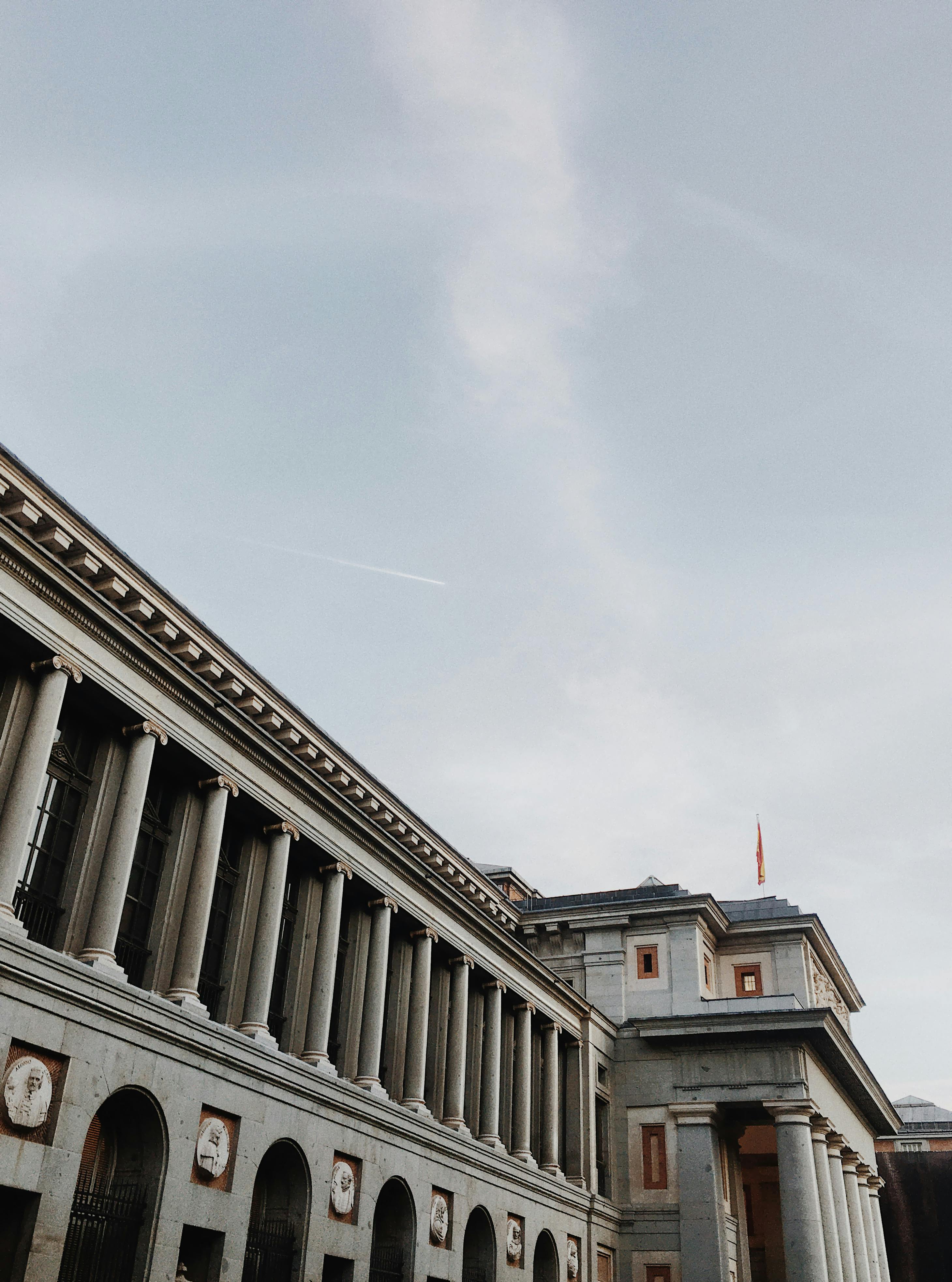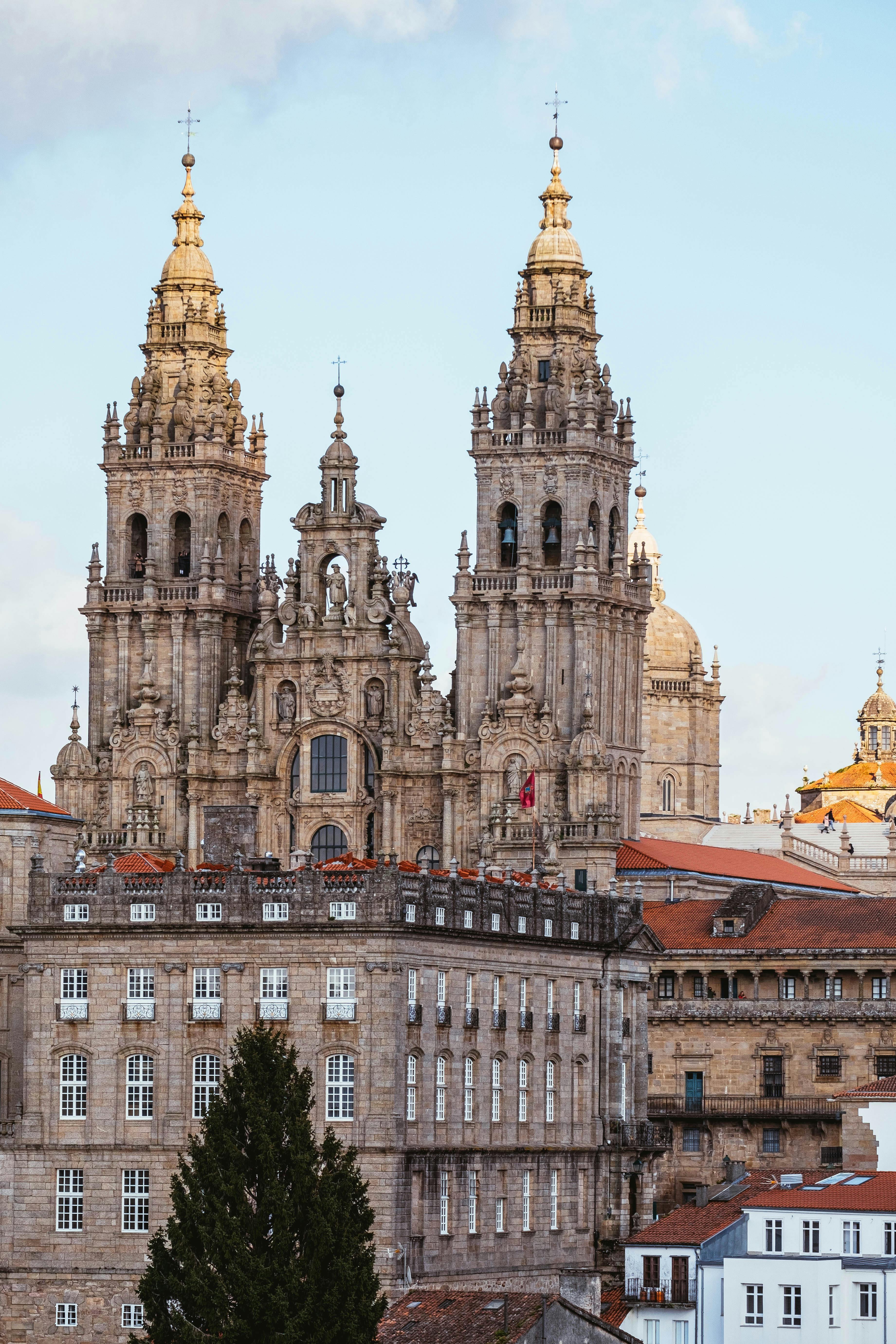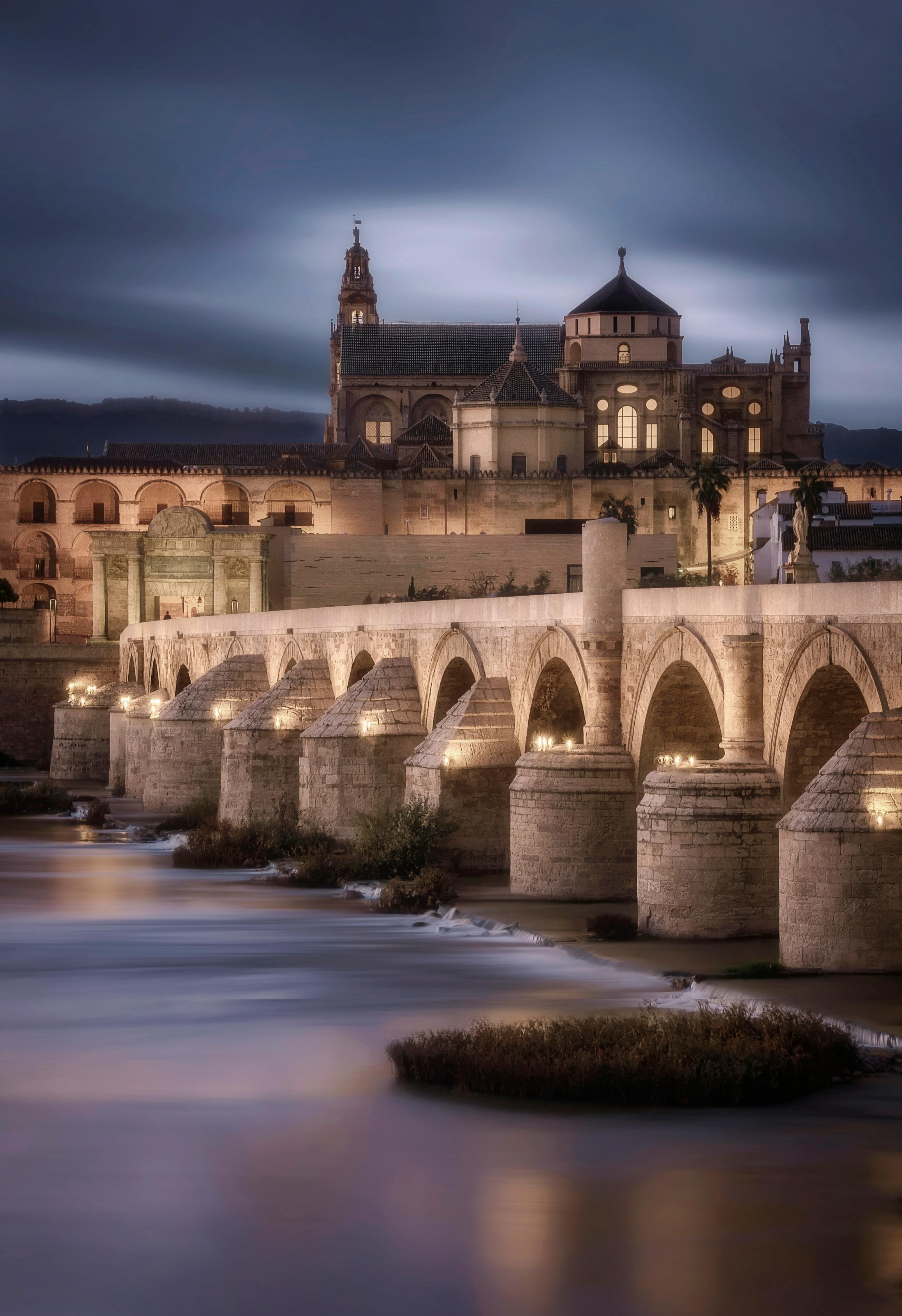Spain Country Guide.

Coastline. Spain has a coastline that stretches approximately 4,964 kilometers.

Sun hours. More than 2.500 sun hours every year.

Best time to visit. The best time to visit Spain is spring or fall for pleasant weather and fewer crowds. Summer is ideal for beaches but very hot inland. Winter is quieter, with mild southern weather and skiing in the mountains.

Must see. Alhambra, La Mezquita, Montserrat Mountain, Tabernas Desert, The Royal Palace of Madrid and much more ...
Must knowns about Spain.
Dive into the essence of Spain. From its stunning landscapes and rich history to its vibrant culture and dynamic economy, this section paints a vivid picture of what makes this nation unique. Explore the heart and soul of Spain, where every detail tells a story of tradition, innovation, and resilience.
Spain.
The best time to visit Spain is during spring (March to May) and fall (September to November), when the weather is mild, perfect for sightseeing and outdoor activities.
Summer (June to August) is ideal for beach destinations but can be very hot in cities like Seville and Madrid.
Winter (December to February) offers a quieter experience, with mild temperatures in the south and excellent skiing in the Pyrenees and Sierra Nevada.
Spain is a country of captivating contrasts, where vibrant culture, breathtaking landscapes, and culinary excellence come together. Its natural beauty spans from the golden beaches of the Costa Brava and Costa del Sol to the dramatic cliffs of Galicia and the towering Pyrenees mountains, offering visitors opportunities for both serene relaxation and adventurous exploration. The Canary Islands, with their volcanic landscapes, and the rolling plains of Castilla-La Mancha provide yet another layer of diversity. Spain’s cities are cultural treasures, with Madrid’s royal palaces and world-class museums, Barcelona’s iconic Gaudí architecture, and Seville’s flamenco rhythms and Moorish history creating a vibrant tapestry of art and tradition. In Andalusia, the stunning Alhambra palace and the white-washed villages reflect the country’s rich Islamic past.
Gastronomy is central to the Spanish experience, with each region offering distinct flavors, from the seafood-rich dishes of Galicia and the famous paella of Valencia to the robust wines of La Rioja and the exquisite jamón ibérico. Tapas culture invites social dining, with small, flavorful bites shared among friends. Festivals like La Tomatina and Las Fallas ignite Spain’s towns with energy, while the slower pace of life in its rural areas allows for quiet reflection, often over a glass of sangria or a meal at a local café. Spain is a country where tradition and modernity blend seamlessly, making it an unforgettable destination for travelers seeking both excitement and tranquility.
Visa requirements.
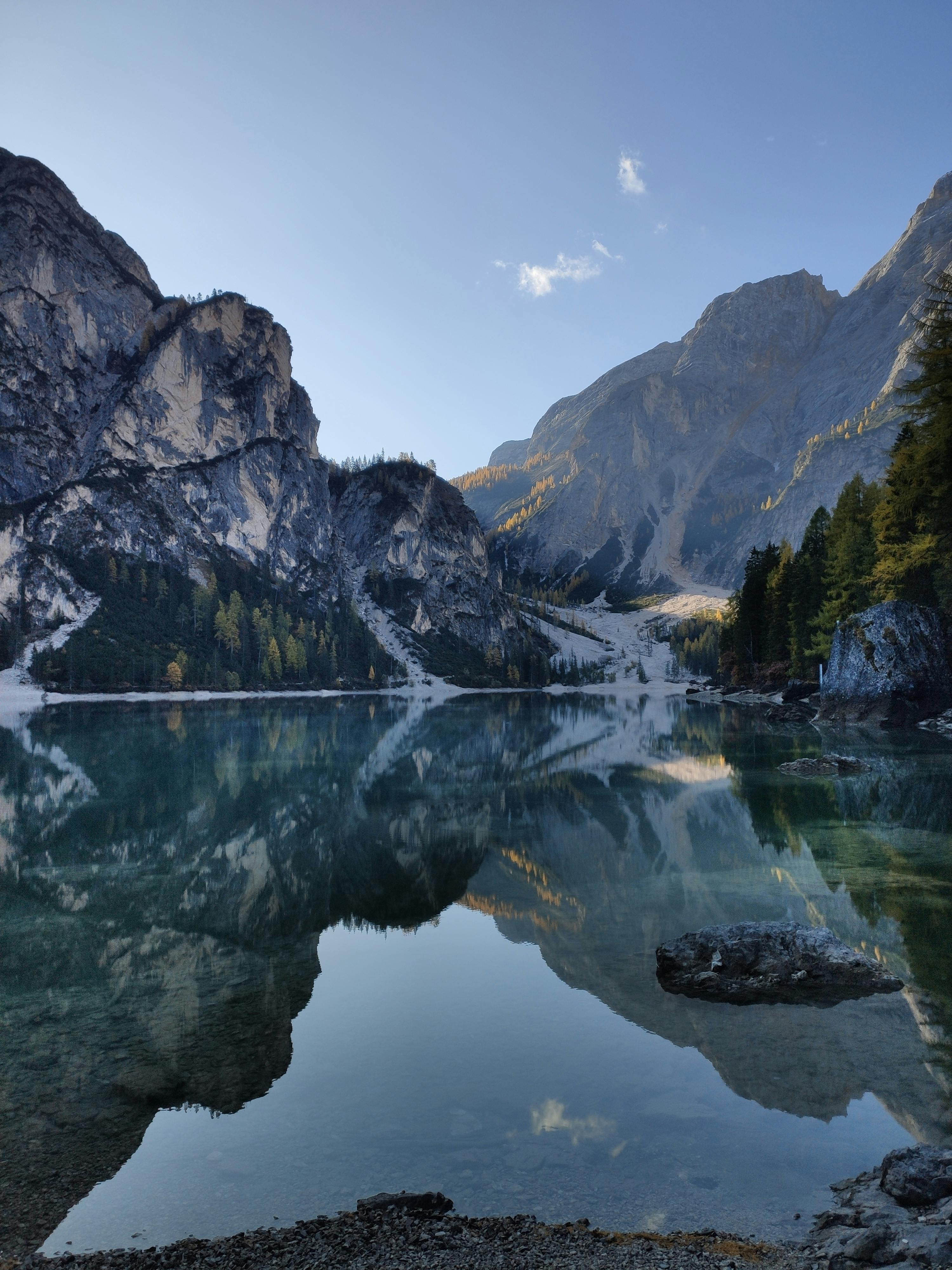
Short-Stay Visas (Schengen Visas).
A Schengen visa allows entry to Spain and other Schengen countries for up to 90 days within a 180-day period for tourism, business, family visits, or short-term study.
Who Needs a Schengen Visa?
- Non-EU/EEA/Swiss Nationals: Most non-EU/EEA/Swiss nationals require a Schengen visa to enter Spain for short stays.
- Visa-Exempt Countries: Citizens of certain countries, including the United States, Canada, Australia, New Zealand, Japan, and most South American nations, do not need a visa for short stays of up to 90 days within a 180-day period.
Requirements:
- Application Form: Completed and signed Schengen visa application form.
- Passport: Must be valid for at least three months beyond your intended departure from the Schengen Area, issued within the last 10 years, and containing at least two blank pages.
- Photographs: Two recent passport-sized photos that meet the Schengen visa photo requirements.
- Travel Insurance: Proof of medical insurance covering at least €30,000 for medical emergencies, hospital care, and repatriation, valid throughout the Schengen Area.
- Proof of Accommodation: Hotel bookings, a letter of invitation from a host, or proof of accommodation for the entire duration of your stay.
- Proof of Financial Means: Recent bank statements, proof of employment, or sponsorship showing sufficient funds to cover the stay (approximately €90 per day).
- Flight Itinerary: A round-trip ticket or onward travel reservation.
- Supporting Documents: Depending on the purpose of the visit, you may need additional documents such as an invitation letter, business correspondence, or conference registration.
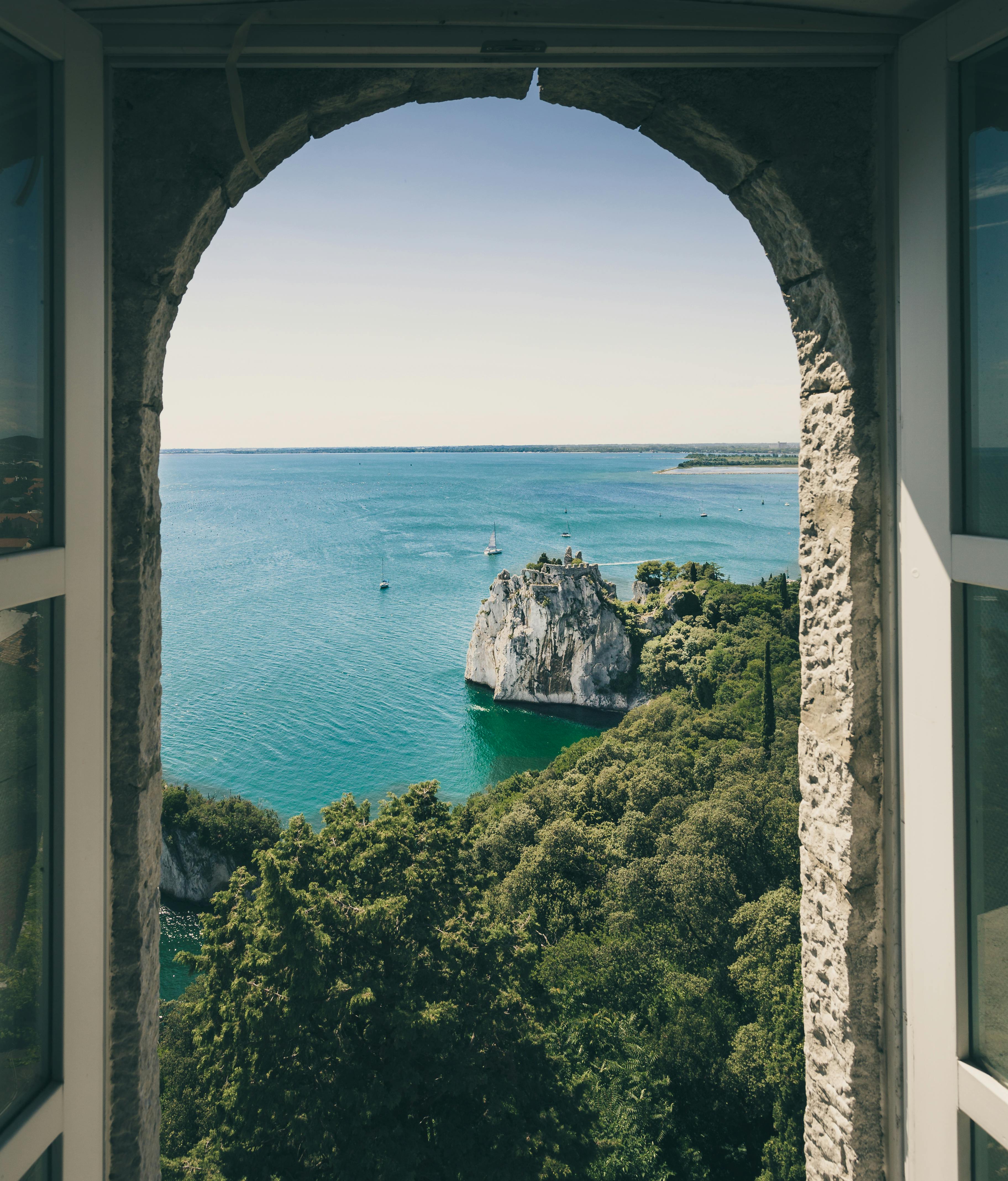
Long-Stay Visas (National Visas).
A long-stay visa is required for stays of more than 90 days in Spain. These visas are typically granted for work, study, family reunification, or residency.
Who Needs a National Visa?
- Non-EU/EEA/Swiss nationals who intend to stay in Spain for more than 90 days for work, study, or family reunification.
- EU/EEA/Swiss nationals do not require a visa but must register with local authorities if staying for more than 90 days.
Types of Long-Stay Visas:
- Work Visa: For individuals employed by a Spanish company or self-employed individuals.
- Student Visa: For individuals attending a recognized educational institution in Spain.
- Family Reunification Visa: For joining a family member who is legally residing in Spain.
- Non-Lucrative Visa: For retirees or those who wish to live in Spain without engaging in any work or professional activities.
- Investor or Golden Visa: For those investing significant funds in Spain, such as real estate or businesses.
Requirements:
- Application Form: Completed and signed long-stay visa application form.
- Passport: Valid for the duration of your stay, with at least two blank pages.
- Photographs: Two recent passport-sized photos.
- Proof of Financial Means: Documentation proving financial solvency for the entire duration of the stay, such as bank statements, proof of employment, or proof of income.
- Proof of Accommodation: Lease agreement, property purchase, or accommodation details.
- Health Insurance: Proof of adequate health insurance covering the entirety of the stay in Spain.
- Purpose-Specific Documents:
- Work Visa: Work contract, proof of employer registration in Spain, and confirmation of a work permit from Spanish authorities.
- Student Visa: Enrollment letter from the educational institution, proof of financial means, and proof of accommodation.
- Family Reunification Visa: Proof of family ties (e.g., marriage or birth certificates) and the resident family member’s legal status in Spain.
- Non-Lucrative Visa: Proof of sufficient financial resources and health insurance.
- Criminal Record Check: Some long-term visas require a background check from your home country.
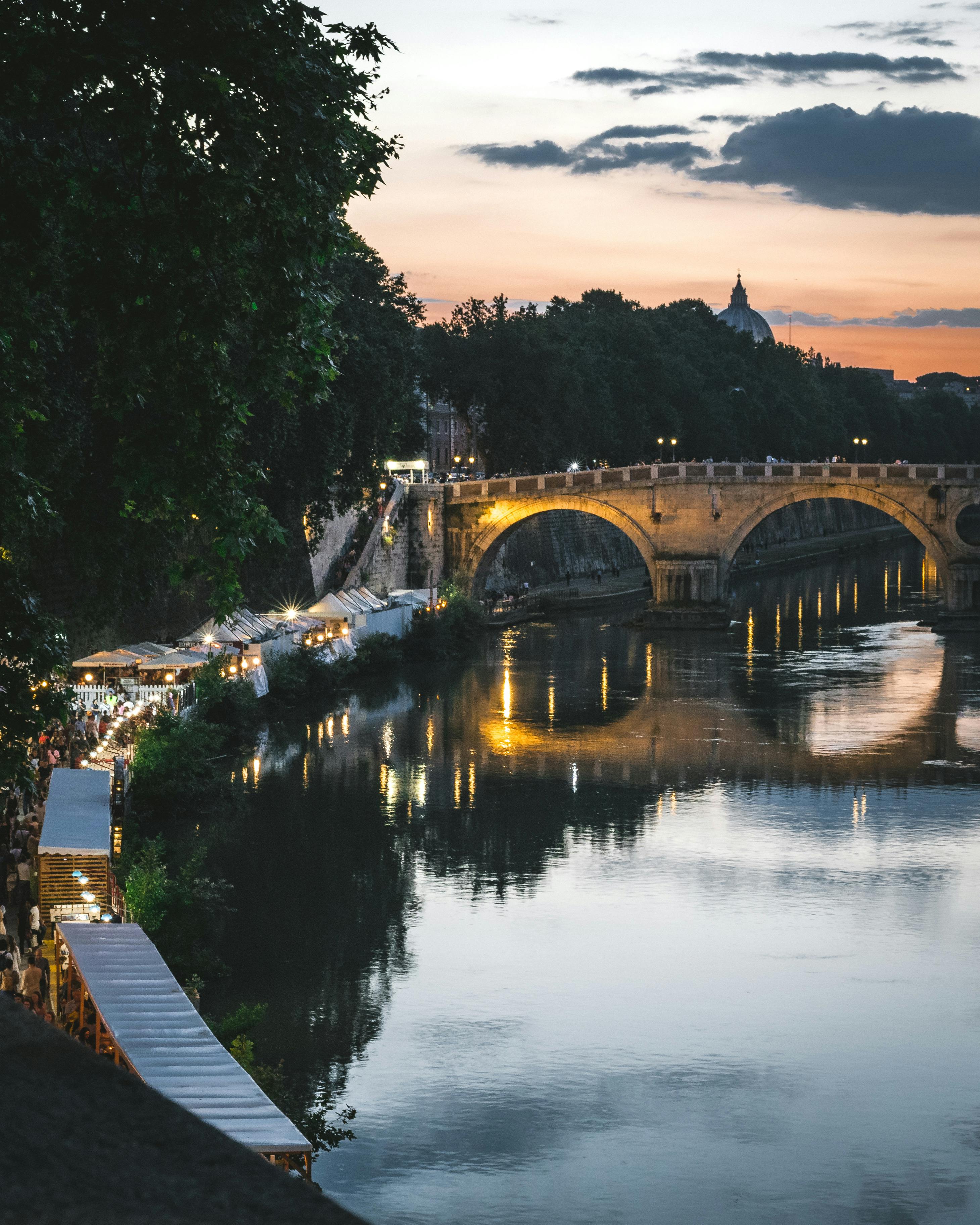
Transit Visas.
This visa is for nationals of certain countries who are transiting through a Spanish airport while traveling to a non-Schengen destination.
Who Needs a Transit Visa?
- Nationals from specific countries, such as Afghanistan, Bangladesh, Cameroon, Congo, Eritrea, Ethiopia, Ghana, Iran, Iraq, Nigeria, Pakistan, Somalia, Sri Lanka, and Syria, among others, may require an airport transit visa.
Requirements:
- Application Form: Completed and signed.
- Passport: Valid with at least one blank page.
- Flight Ticket: Proof of onward travel to a non-Schengen destination.
- Visa for Next Destination: If applicable, the visa for the final destination country.
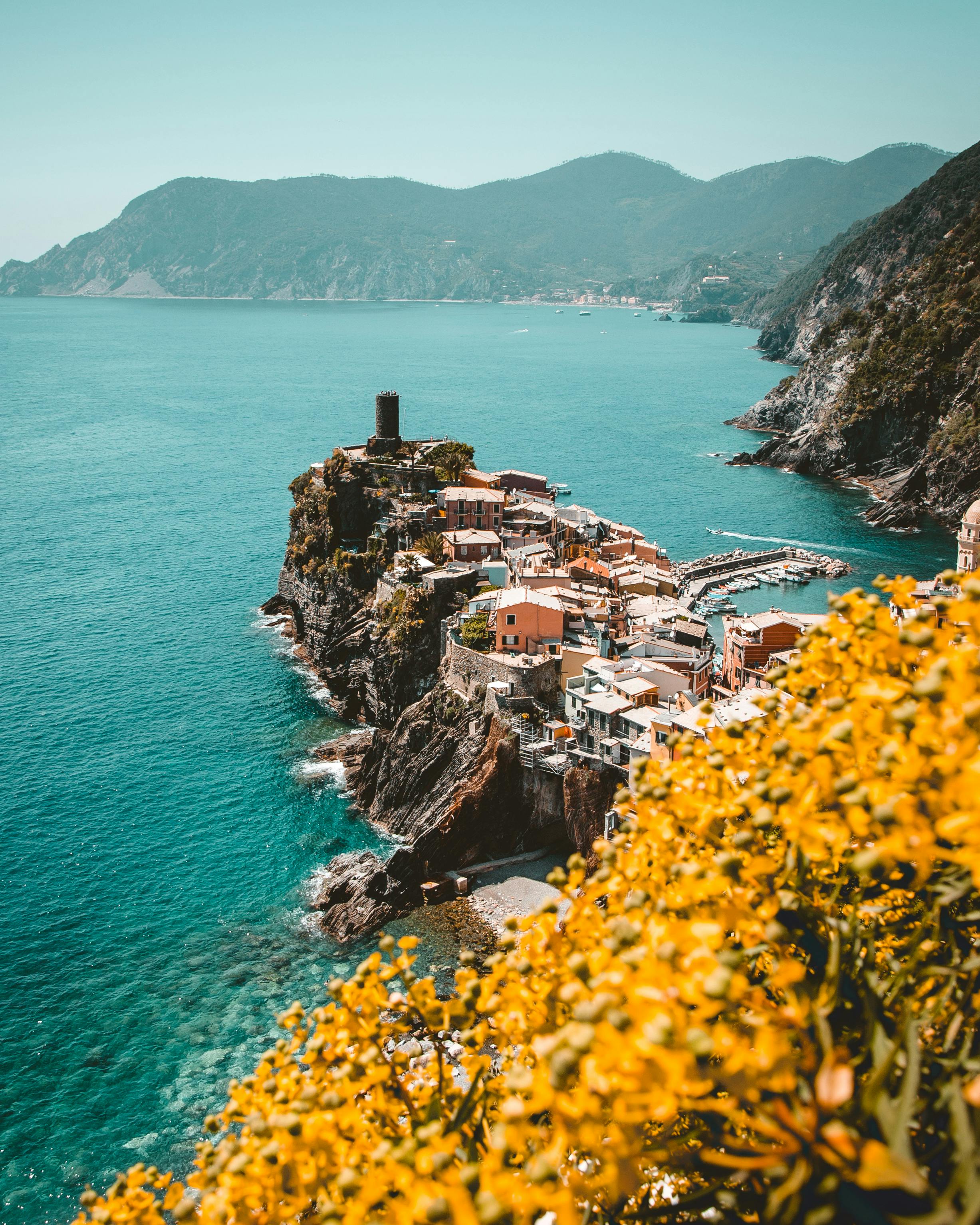
Special Cases.
EU/EEA/Swiss Nationals: Do not need a visa to enter, reside, work, or study in Spain. However, if staying longer than 90 days, they must register with local authorities and obtain a residence certificate.
Family Members of EU/EEA/Swiss Nationals: Depending on their nationality, they may be able to benefit from simplified visa procedures or visa exemptions.
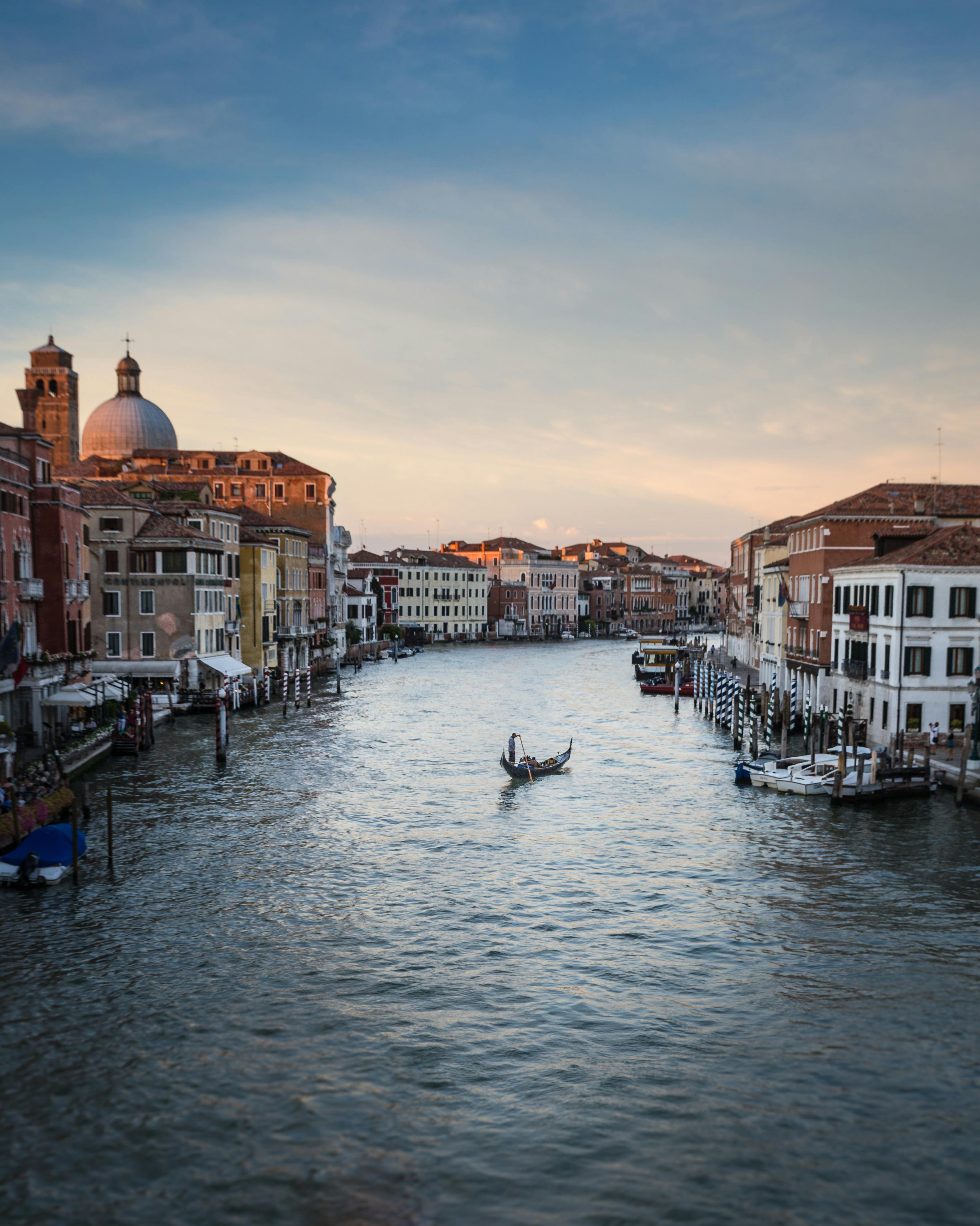
Application Process.
- Determine the Visa Type: Based on the purpose and length of your stay, decide whether you need a short-stay (Schengen) visa or a long-stay national visa.
- Gather Required Documents: Collect the necessary documents specific to your visa type.
- Complete the Application Form: Available online or at the Spanish consulate or embassy.
- Schedule an Appointment: At the nearest Spanish consulate/embassy or visa application center.
- Submit the Application: In person, including biometric data (fingerprints).
- Pay the Visa Fee: The fee varies depending on the type of visa and nationality.
- Wait for Processing: Schengen visa applications generally take up to 15 calendar days, while long-stay visa processing may take longer, from several weeks to a few months.
- Collect the Visa: Once approved, collect the visa from the consulate/embassy or visa application center.
Additional Notes.
- Multiple Entry Visa: If you need to travel in and out of the Schengen Area multiple times, you can request a multiple-entry visa.
- Visa Extensions: Schengen visas generally cannot be extended beyond 90 days except under exceptional circumstances. Long-stay visas may be extended depending on the situation.
- Schengen Visa: €80 for adults and €40 for children aged 6–12. Visa fees are waived for children under 6 and for family members of EU/EEA citizens.
- Long-Stay Visas: Fees vary depending on the purpose of the visa and nationality, typically ranging from €60 to €150.
It’s important to consult the Spanish embassy or consulate in your home country for the most accurate and up-to-date information, as visa requirements can change.
Safety in Switzerland.

General Safety.
- Low Crime Rate: Spain has a low rate of violent crime. However, petty crime, especially pickpocketing, is common in busy urban areas and tourist hotspots like Madrid, Barcelona, Seville, and Valencia.
- Pickpocketing and Theft: Pickpockets tend to target crowded areas, public transport, and tourist attractions. Be particularly careful in areas like Las Ramblas (Barcelona), Puerta del Sol (Madrid), and during large events. Keep your belongings secure, avoid displaying valuables, and use a money belt or crossbody bag.

Health and Medical Care.
- High-Quality Healthcare: Spain has an excellent public healthcare system, accessible through the European Health Insurance Card (EHIC) for EU citizens. Private health care is also available and of high quality. Non-EU visitors should ensure they have travel insurance that covers medical expenses.
- Pharmacies: Pharmacies ("farmacias") are widespread and generally well-stocked. Many are open late or operate 24 hours in major cities. You can find over-the-counter medicines, and pharmacists are well-trained to offer advice.

Natural Hazards and Environmental Considerations.
- Heat and Sun Exposure: During the summer months, especially in southern Spain and inland areas, temperatures can exceed 40°C (104°F). It is important to stay hydrated, wear sunscreen, and avoid excessive sun exposure during peak hours.
- Wildfires: Spain experiences wildfires during the summer, particularly in rural and forested areas. Always follow local warnings and evacuation orders in case of a wildfire.
- Coastal Safety: Spain has many beautiful beaches, but strong currents and rip tides can be dangerous. Always swim in designated areas where lifeguards are present and follow flag warnings indicating sea conditions (green for safe, yellow for caution, red for dangerous).

Transportation Safety.
- Public Transport: Spain’s public transport, including buses, trains, and the metro, is reliable, affordable, and safe. However, be cautious of pickpockets on public transportation, especially in cities like Madrid and Barcelona.
- Taxis and Ride-Sharing: Licensed taxis are safe, and ride-sharing apps like Uber and Cabify are widely used in larger cities. Always use official taxis and ensure the meter is running or agree on a fare before starting the ride.
- Road Safety: Spain has a well-developed road network, and driving is generally safe, but drivers should be cautious in rural or mountainous areas where roads can be narrow and winding. Speed limits are strictly enforced, and there are severe penalties for driving under the influence of alcohol.
- Cycling: Cycling is common in cities, especially in bike-friendly areas like Barcelona. Always wear a helmet and follow traffic rules.

Cultural Considerations.
- Respect for Local Customs: Spaniards are generally friendly and welcoming to tourists. Learning a few basic Spanish phrases can go a long way, especially in more rural areas where English is less commonly spoken.
- Siesta Culture: Many businesses in smaller towns and rural areas may close for a "siesta" in the early afternoon, typically from 2 pm to 5 pm. Plan your activities accordingly.

Emergency Contacts.
- Police: 091 (national), 092 (local)
- Ambulance: 112
- Fire Brigade: 080
Must-sees in Spain.
Prepare to embark on a journey through the most captivating and essential sites Spain has to offer. From majestic natural landscapes to historic marvels, these locations are the very heart and soul of Switzerland's allure.
Regions in Spain.
Immerse yourself in the captivating charm of Switzerland, where every region unfolds a unique tapestry of landscapes, culture, and history. From the snow-capped peaks of the Alps to the serene shores of its pristine lakes, the country offers a stunning array of settings, each with its own distinct character and allure.
Dive into the rich diversity that makes Switzerland a truly multifaceted destination, and explore the extraordinary range of experiences that await across its enchanting regions. Discover what makes each part of Switzerland a world of its own.

Andalusia.
Florence.
Florence, a Renaissance jewel, dazzles with Michelangelo’s David, the Duomo, and art in the Uffizi Gallery, all set in charming, historic streets.
Val d’Orcia.
Val d’Orcia, a scenic Tuscan valley, delights with rolling hills, medieval towns, and fine wines, showcasing Italy’s serene rural charm.
Cascate del Mulino.
Cascate del Mulino features enchanting natural hot springs cascading into picturesque pools, offering a tranquil retreat amid stunning countryside.
Discover the allure of the Bern region, where Switzerland’s rich heritage and natural splendor converge to create an unforgettable luxury experience. Nestled in the heart of Switzerland, Bern boasts a temperate climate that offers pleasant summers and picturesque winters, ideal for year-round exploration.
This region is renowned for its cultural treasures, including the charming medieval Old Town of Bern, a UNESCO World Heritage site, with its well-preserved architecture and iconic Zytglogge clock tower.
The region’s diverse landscapes offer opulent retreats, from the pristine lakeside resorts of Thun to the upscale Alpine resorts of Adelboden and Gstaad.
Indulge in gourmet dining at fine restaurants, explore world-class art at the Bern Kunstmuseum, or relax in luxury spas with panoramic mountain views.
With its combination of historical richness and modern elegance, Bern presents an exceptional destination for discerning travelers seeking a blend of culture, luxury, and natural beauty.
Bern.
Sadly we are not able to show you all activities. But let the three activities below give you a small tip and insight in what is possible.
Get in contact with us to discover more about what is possible.

Aragón.
Florence.
Florence, a Renaissance jewel, dazzles with Michelangelo’s David, the Duomo, and art in the Uffizi Gallery, all set in charming, historic streets.
Val d’Orcia.
Val d’Orcia, a scenic Tuscan valley, delights with rolling hills, medieval towns, and fine wines, showcasing Italy’s serene rural charm.
Cascate del Mulino.
Cascate del Mulino features enchanting natural hot springs cascading into picturesque pools, offering a tranquil retreat amid stunning countryside.
Central Switzerland offers an escape into a realm of natural beauty and cultural richness. This region, known for its stunning alpine vistas and picturesque lakes, enjoys a temperate climate with warm summers and snowy winters, making it a year-round destination.
Explore the elegant town of Lucerne, renowned for its historic Chapel Bridge and vibrant arts scene, or take a scenic cruise on Lake Lucerne, surrounded by majestic mountains. The area is also home to the exclusive resort town of Engelberg, where you can enjoy premier skiing and world-class spa facilities. The charming town of Weggis, nestled by the lake, provides a tranquil retreat with panoramic views and gourmet dining experiences.
Central Switzerland’s unique selling points include its blend of natural splendor and refined luxury, offering discerning travelers an exceptional mix of relaxation, adventure, and cultural immersion.
Central Switzerland activities.
Sadly we are not able to show you all activities. But let the three activities below give you a small tip and insight in what is possible.
Get in contact with us to discover more about what is possible.

Eastern Switzerland.
Florence.
Florence, a Renaissance jewel, dazzles with Michelangelo’s David, the Duomo, and art in the Uffizi Gallery, all set in charming, historic streets.
Val d’Orcia.
Val d’Orcia, a scenic Tuscan valley, delights with rolling hills, medieval towns, and fine wines, showcasing Italy’s serene rural charm.
Cascate del Mulino.
Cascate del Mulino features enchanting natural hot springs cascading into picturesque pools, offering a tranquil retreat amid stunning countryside.
Eastern Switzerland invites discerning travelers to explore its diverse landscapes and rich cultural heritage. This region, characterized by its stunning alpine scenery and charming towns, enjoys a temperate climate with mild summers and crisp winters, perfect for a variety of luxury experiences throughout the year.
Discover the elegance of St. Moritz, renowned for its high-end shopping and world-class winter sports, or visit the picturesque town of Appenzell, celebrated for its traditional Swiss architecture and artisanal cheese.
The vibrant city of St. Gallen offers a unique blend of historical architecture and modern sophistication, highlighted by its UNESCO-listed Abbey Library. For a serene retreat, the Engadine Valley provides breathtaking mountain views and exclusive wellness resorts.
Eastern Switzerland’s unique selling points include its blend of natural beauty, cultural depth, and luxury offerings, creating a distinctive and memorable experience for travelers seeking both adventure and relaxation.
Eastern Switzerland activities.
Sadly we are not able to show you all activities. But let the three activities below give you a small tip and insight in what is possible.
Get in contact with us to discover more about what is possible.

Balearic Islands.
Florence.
Florence, a Renaissance jewel, dazzles with Michelangelo’s David, the Duomo, and art in the Uffizi Gallery, all set in charming, historic streets.
Val d’Orcia.
Val d’Orcia, a scenic Tuscan valley, delights with rolling hills, medieval towns, and fine wines, showcasing Italy’s serene rural charm.
Cascate del Mulino.
Cascate del Mulino features enchanting natural hot springs cascading into picturesque pools, offering a tranquil retreat amid stunning countryside.
The Lake Geneva Region captivates with its blend of sophistication and natural beauty. This area, characterized by its stunning lakeside setting and luxurious charm, enjoys a mild climate with warm summers and crisp winters, making it a prime destination year-round.
Explore Geneva’s cosmopolitan atmosphere, where you can indulge in high-end shopping, fine dining, and exclusive cultural experiences such as private tours of the Red Cross Museum and the Jet d'Eau fountain. Lausanne offers a perfect mix of elegance and history with its renowned Olympic Museum and vibrant cultural scene. Montreux, famed for its annual Montreux Jazz Festival, provides a scenic backdrop with its lakeside promenades and luxury hotels.
The region’s unique selling points include its world-class amenities, picturesque landscapes, and a rich cultural tapestry that promises both relaxation and sophisticated engagement.
Lake Geneva Region activities.
Sadly we are not able to show you all activities. But let the three activities below give you a small tip and insight in what is possible.
Get in contact with us to discover more about what is possible.

Basque Country.
Florence.
Florence, a Renaissance jewel, dazzles with Michelangelo’s David, the Duomo, and art in the Uffizi Gallery, all set in charming, historic streets.
Val d’Orcia.
Val d’Orcia, a scenic Tuscan valley, delights with rolling hills, medieval towns, and fine wines, showcasing Italy’s serene rural charm.
Cascate del Mulino.
Cascate del Mulino features enchanting natural hot springs cascading into picturesque pools, offering a tranquil retreat amid stunning countryside.
Ticino, the Italian-speaking region of Switzerland, offers an alluring blend of Mediterranean charm and Swiss sophistication.
Renowned for its stunning lakes, vibrant culture, and picturesque landscapes, Ticino enjoys a mild climate with warm summers and mild winters, making it an ideal destination throughout the year. Explore Lugano’s upscale shops and lakeside promenades, or visit Bellinzona, famous for its medieval castles that are UNESCO World Heritage sites.
The region's scenic beauty extends to Lake Maggiore, where luxurious lakeside resorts and exclusive boat cruises provide unparalleled relaxation. For a unique experience, indulge in a private tour of the Verzasca Valley, known for its emerald-green river and striking natural rock formations.
Ticino’s unique selling points include its Italian flair, amenities, and the seamless integration of cultural richness with natural beauty, offering an exceptional experience for travelers seeking elegance and tranquility.
Ticino activities.
Sadly we are not able to show you all activities. But let the three activities below give you a small tip and insight in what is possible.
Get in contact with us to discover more about what is possible.

Valais.
Florence.
Florence, a Renaissance jewel, dazzles with Michelangelo’s David, the Duomo, and art in the Uffizi Gallery, all set in charming, historic streets.
Val d’Orcia.
Val d’Orcia, a scenic Tuscan valley, delights with rolling hills, medieval towns, and fine wines, showcasing Italy’s serene rural charm.
Cascate del Mulino.
Cascate del Mulino features enchanting natural hot springs cascading into picturesque pools, offering a tranquil retreat amid stunning countryside.
Valais, nestled in the heart of the Swiss Alps, offers a luxurious blend of natural grandeur and refined elegance.
This region, characterized by its dramatic mountain landscapes and sunny climate, is renowned for its world-class ski resorts, charming alpine villages, and exceptional outdoor activities. Explore the renowned resort town of Zermatt, with its breathtaking views of the iconic Matterhorn and exclusive shopping and dining experiences.
The town of Saas-Fee, often called the “Pearl of the Alps,” features a car-free village and offers pristine skiing and glacier hiking. The historic town of Sion boasts medieval architecture and a rich cultural heritage, while the thermal spas of Leukerbad provide unparalleled relaxation in a stunning alpine setting.
Valais’s unique selling points include its diverse landscapes, luxurious amenities, and a wealth of high-end experiences that combine outdoor adventure with sophisticated leisure.
Valais activities.
Sadly we are not able to show you all activities. But let the three activities below give you a small tip and insight in what is possible.
Get in contact with us to discover more about what is possible.

Zurich.
Florence.
Florence, a Renaissance jewel, dazzles with Michelangelo’s David, the Duomo, and art in the Uffizi Gallery, all set in charming, historic streets.
Val d’Orcia.
Val d’Orcia, a scenic Tuscan valley, delights with rolling hills, medieval towns, and fine wines, showcasing Italy’s serene rural charm.
Cascate del Mulino.
Cascate del Mulino features enchanting natural hot springs cascading into picturesque pools, offering a tranquil retreat amid stunning countryside.
Zurich, Switzerland's vibrant financial and cultural hub, seamlessly blends cosmopolitan sophistication with picturesque charm. Renowned for its elegant boutiques, high-end dining, and vibrant cultural scene, Zurich offers a range of luxury experiences set against a backdrop of stunning landscapes.
Explore the historic Altstadt (Old Town) with its medieval architecture, visit the Kunsthaus Zurich for a taste of world-class art, and stroll along Bahnhofstrasse, one of the world’s most exclusive shopping streets. The city’s proximity to the pristine Lake Zurich and the nearby Uetliberg mountain provides ample opportunities for upscale outdoor activities and breathtaking views. In winter, the region transforms into a winter wonderland, perfect for luxury skiing and après-ski experiences.
Zurich’s unique selling points include its fusion of modernity with historic charm, its status as a global financial center, and its unparalleled quality of life, making it a premier destination for travelers seeking both elegance and adventure.
Zurich activities.
Sadly we are not able to show you all activities. But let the three activities below give you a small tip and insight in what is possible.
Get in contact with us to discover more about what is possible.
Gastronomy in Spain.
Explore the culinary delights of Switzerland, where you'll find famous recipes, top restaurants, and celebrated chefs. This guide offers a taste of the nation’s rich food culture, but remember, there’s a whole world of flavors and dining experiences beyond these highlights. Dive in and let your palate and eyes discover famous recipes, top restaurants, and celebrated chefs.
Famous dishes.
Paella.
Paella is a traditional Spanish dish originating from Valencia, made with saffron-infused rice, seafood like prawns and mussels, and often chicken or rabbit. This iconic dish is slow-cooked in a wide, shallow pan to allow the flavors to meld, creating a hearty and aromatic meal that captures the essence of Spanish coastal cuisine.
Tortilla Española.
Tortilla Española is a Spanish omelette made with eggs, thinly sliced potatoes, and onions, fried to golden perfection. This simple yet satisfying dish is a staple of Spanish tapas, offering a comforting blend of flavors and textures. Whether served hot or cold, it is enjoyed as a main course, snack, or side dish across Spain.
Gazpacho.
Gazpacho is a chilled tomato-based soup that hails from Andalusia. Made with ripe tomatoes, cucumbers, peppers, garlic, and olive oil, it’s blended until smooth and served cold for a refreshing taste. This vibrant dish is perfect for warm summer days and is a must-try for lovers of light, flavorful cuisine.
Patatas Bravas.
Patatas Bravas are crispy fried potatoes served with a spicy, tangy tomato sauce and sometimes aioli. This popular tapas dish, found in bars across Spain, offers a delightful contrast of textures and flavors, making it a crowd-pleaser. The simplicity of ingredients highlights the boldness of Spanish flavors in every bite.
Jamón Ibérico.
Jamón Ibérico is Spain’s prized dry-cured ham, made from acorn-fed Iberian pigs. Aged to perfection, this delicacy offers a rich, nutty flavor and melt-in-your-mouth texture. Thinly sliced and served as part of tapas, it showcases the country's dedication to quality and tradition, making it a luxurious treat.
Churros con Chocolate.
Churros con Chocolate are deep-fried dough pastries served with thick, rich hot chocolate for dipping. Crispy on the outside and soft inside, churros are a beloved Spanish snack often enjoyed for breakfast or dessert. Their sweet, indulgent nature makes them a favorite among locals and visitors alike.
Tartiflette.
Pulpo a la Gallega is a Galician dish featuring tender boiled octopus sprinkled with olive oil, paprika, and sea salt. Traditionally served on wooden plates, this dish offers a delicate balance of flavors, with the smoky paprika enhancing the natural taste of the octopus. It’s a must-try for seafood enthusiasts.
Croquetas.
Croquetas are creamy, bite-sized fritters filled with béchamel sauce and ingredients like ham, chicken, or cod. These crispy, golden morsels are a popular part of Spanish tapas culture, offering a satisfying crunch and a rich, flavorful interior. Perfect as an appetizer or snack, croquetas are a favorite in Spanish households.
Pimientos de Padrón.
Pimientos de Padrón are small, mild green peppers fried in olive oil and sprinkled with sea salt. While most peppers are sweet and mild, an occasional spicy one adds an element of surprise. This simple yet flavorful dish is a favorite tapa, enjoyed for its light, smoky taste and perfect for sharing.
Fabada Asturiana.
Fabada Asturiana is a hearty bean stew from Asturias, made with white beans, chorizo, morcilla (blood sausage), and pancetta. Slow-cooked to perfection, this warming dish is packed with rich, smoky flavors and is a staple of northern Spanish cuisine, especially enjoyed during colder months.
Famous Spanish Chefs.
Andreas Caminada.
Known for his avant-garde style, Caminada blends traditional Swiss flavors with modern techniques at his three-Michelin-starred restaurant Schloss Schauenstein in Fürstenau. His approach emphasizes local ingredients, artistic presentation, and innovative dishes, making him a leader in Switzerland's culinary scene.
Daniel Humm.
Humm’s style is refined, minimalist, and deeply rooted in farm-to-table philosophy. As the chef of Eleven Madison Park in New York, Humm crafts elegant, vegetable-forward dishes that highlight pure flavors. His meticulous attention to detail and sustainability-focused approach set him apart.
Heiko Nieder.
Chef at The Restaurant at The Dolder Grand in Zurich, Nieder’s cuisine is celebrated for its creativity, bold flavors, and precision. His two-Michelin-starred restaurant offers a modern European menu with a touch of Asian influences, making him a standout in contemporary gastronomy.
Tanja Grandits.
Head chef at Stucki in Basel, Grandits is known for her vibrant, color-themed dishes and innovative use of herbs and spices. Her playful, aromatic style blends traditional and modern elements, earning her two Michelin stars and recognition as one of Switzerland’s most creative chefs.
Peter Knogl.
At the helm of the three-Michelin-starred Cheval Blanc in Basel, Knogl’s style is elegant, sophisticated, and influenced by French haute cuisine. His dishes are known for their balance, subtlety, and flawless execution, making him a master of refined gastronomy.
Didier de Courten.
Leading chef at Le Terminus in Sierre, de Courten’s cuisine is rooted in precision and creativity. Known for his artistic presentation and meticulous use of local ingredients, his dishes reflect a harmonious blend of classic and contemporary techniques, earning him two Michelin stars.
Dominique Gauthier.
As the chef of Le Chat Botté at Beau-Rivage in Geneva, Gauthier’s style is refined, elegant, and heavily influenced by Mediterranean flavors. His focus on seasonal ingredients and light, yet sophisticated dishes has garnered widespread acclaim and a Michelin star.
Stefan Heilemann.
Chef at Ecco Zurich, Heilemann’s cuisine is inventive, bold, and characterized by intricate flavor combinations. His meticulous approach to cooking, along with a flair for exotic ingredients, has earned him two Michelin stars and a reputation for culinary excellence.
Franck Giovannini.
At Hôtel de Ville in Crissier, Giovannini continues the legacy of one of the world’s most renowned restaurants. His style is classic French with modern twists, focusing on pure flavors and seasonal ingredients. His work upholds the restaurant’s three-Michelin-star status with finesse.
Michelin star restaurants.
Key information about the restaurant.
- Cuisine Style: Bistronomy, French Bistro.
- Cuisine Style: Molecular Gastronomy with Greek influences
- Most Famous Dish: “Greek Salad” reimagined in molecular form
- Accessible for Wheelchairs: Yes
- Pricing Range: €200 - €300 per person
- Link to website.
Funky Gourmet (Athens).
Funky Gourmet is known for its avant-garde cuisine that blends Greek flavors with molecular gastronomy. Co-owned by chefs Georgianna Hiliadaki and Nikos Roussos, it offers a multi-sensory dining experience where art meets food. Dishes are highly conceptual and creative, often pushing the boundaries of traditional Greek cuisine in a modern, playful way.
Key information about the restaurant.
- Cuisine Style: Modern Greek and Mediterranean
- Most Famous Dish: Black Cod with Miso and Lemongrass
- Accessible for Wheelchairs: Yes
- Pricing Range: €150 - €250 per person
- Link to website.
Botrini’s (Athens).
Helmed by renowned chef Ektoras Botrini, Botrini’s offers a creative interpretation of Greek and Mediterranean cuisine. Located in the leafy suburb of Chalandri, it combines technical precision with artistic presentation. The restaurant’s menu is inspired by local ingredients and traditional recipes, delivered with a modern twist.
Key information about the restaurant.
- Cuisine Style: Innovative Greek Seafood
- Most Famous Dish: Squid Ink Risotto with Fresh Seafood
- Accessible for Wheelchairs: Yes
- Pricing Range: €100 - €150 per person
- Link to website.
Varoulko Seaside (Piraeus, Athens).
Varoulko Seaside, run by Michelin-starred chef Lefteris Lazarou, is a seafood lover’s paradise. Located by the marina, the restaurant offers stunning sea views and a menu that elevates traditional Greek seafood dishes with a refined, contemporary twist, emphasizing fresh, local ingredients.
Key information about the restaurant.
- Cuisine Style: Modern Greek
- Most Famous Dish: Lamb with Yogurt and Herbs
- Accessible for Wheelchairs: Yes
- Pricing Range: €120 - €180 per person
- Link to website.
Hytra (Athens).
Hytra blends traditional Greek flavors with modern techniques, offering a refined dining experience with breathtaking views of the Acropolis. Known for its inventive presentations and emphasis on seasonal ingredients, Hytra provides a journey through Greece’s culinary history, interpreted in a contemporary fashion.
Key information about the restaurant.
- Cuisine Style: French-inspired with Greek influences
- Most Famous Dish: Foie Gras with Greek Honey and Figs
- Accessible for Wheelchairs: Limited Accessibility
- Pricing Range: €140 - €200 per person
- Link to website.
Spondi (Athens).
A cornerstone of fine dining in Athens, Spondi offers a blend of French and Greek influences under the guidance of chef Angelos Lantos. The elegant ambiance, combined with meticulous presentations and a menu focused on high-quality ingredients, makes Spondi a top destination for gastronomes.
Key information about the restaurant.
- Cuisine Style: Modern Cycladic
- Most Famous Dish: Fava Bean Puree with Capers and Caramelized Onions
- Accessible for Wheelchairs: Limited Accessibility
- Pricing Range: €130 - €180 per person
- Link to website.
Selene (Santorini).
Situated in the stunning island of Santorini, Selene showcases the best of Cycladic cuisine with an innovative twist. The restaurant emphasizes local produce, offering a journey through Santorini’s culinary history while combining modern techniques and sophisticated presentations under the leadership of chef Ettore Botrini.
Key information about the restaurant.
- Cuisine Style: Innovative Mediterranean
- Most Famous Dish: Sea Urchin with Citrus and Fresh Herbs
- Accessible for Wheelchairs: Yes
- Pricing Range: €150 - €250 per person
- Link to website.
Bill & Coo Gastronomy Project (Mykonos).
Located in Mykonos, Bill & Coo Gastronomy Project offers a fusion of Mediterranean flavors with a focus on fresh, local ingredients and artistic presentations. Chef Athinagoras Kostakos crafts dishes that are both visually stunning and deeply rooted in Greek tradition.
Key information about the restaurant.
- Cuisine Style: Contemporary Greek-French Fusion
- Most Famous Dish: Lobster with Santorini Tomatoes and Herbs
- Accessible for Wheelchairs: Limited Accessibility
- Pricing Range: €180 - €300 per person
- Link to website.
Lauda Restaurant (Santorini).
Nestled in Oia, Lauda blends traditional Greek flavors with contemporary culinary techniques. Chef Emmanuel Renaut, a Michelin-starred chef from France, curates a menu that marries Santorini’s local ingredients with French finesse, creating a one-of-a-kind dining experience with stunning sunset views.
Key information about the restaurant.
- Cuisine Style: Modern Greek with Monastic Influences
- Most Famous Dish: Octopus Carpaccio with Fava and Capers
- Accessible for Wheelchairs: Yes
- Pricing Range: €100 - €150 per person
- Link to website.
Apocalypse (Patmos).
Located on the spiritual island of Patmos, Apocalypse offers an exclusive dining experience inspired by local monastic recipes and ingredients. Chef Dimitris Stamoudis emphasizes authentic flavors, organic produce, and a serene ambiance that reflects the island’s heritage and culinary traditions.
Key information about the restaurant.
- Cuisine Style: Modern Swiss with avant-garde influences
- Most Famous Dish: Veal with mountain herbs and vegetables
- Accessible for Wheelchairs: Yes
- Pricing Range: $$$$
- Link to website.
Schloss Schauenstein (Fürstenau, Graubünden).
Led by chef Andreas Caminada, this three-Michelin-starred restaurant is located in a historic castle, blending old-world charm with modern gastronomy. Caminada’s cuisine emphasizes local ingredients with artistic, avant-garde presentations that highlight Swiss flavors with contemporary techniques.
Traditional and cozy restaurants.
Key information about the restaurant.
- Cuisine Style: Traditional Greek
- Most Famous Dish: Lamb Kleftiko
- Accessible for Wheelchairs: Limited Accessibility
- Pricing Range: €15 - €30 per person
- Link to website.
Klimataria (Athens).
Klimataria is a traditional taverna nestled in the heart of Athens, offering a nostalgic atmosphere with live Greek music. Known for its rustic charm and hearty dishes, Klimataria serves classic Greek comfort food, with a focus on slow-cooked meats and rich stews, creating a lively and authentic dining experience.
Key information about the restaurant.
- Cuisine Style: Traditional Island Cuisine
- Most Famous Dish: Stuffed Calamari with Rice and Herbs
- Accessible for Wheelchairs: Yes
- Pricing Range: €20 - €35 per person
- Link to website.
Drosia (Patmos).
Located in the serene village of Chora in Patmos, Drosia is known for its cozy setting and focus on local island cuisine. This family-run restaurant emphasizes traditional dishes made with fresh, local ingredients, offering a taste of authentic Patmian flavors in a warm and inviting atmosphere.
Key information about the restaurant.
- Cuisine Style: Greek Seafood
- Most Famous Dish: Grilled Octopus with Fava
- Accessible for Wheelchairs: Yes
- Pricing Range: €25 - €45 per person
- Link to website.
To Psaraki (Santorini).
To Psaraki, located in Vlychada, Santorini, is celebrated for its fresh seafood and stunning views of the Aegean Sea. The restaurant combines traditional Greek seafood dishes with a focus on simplicity and fresh ingredients, creating a relaxed and cozy dining experience by the water.
Key information about the restaurant.
- Cuisine Style: Meze with a focus on Seafood
- Most Famous Dish: Sardines Saganaki
- Accessible for Wheelchairs: Yes
- Pricing Range: €20 - €40 per person
- Link to website.
Ouzeri Aristotelous (Thessaloniki).
A hidden gem in Thessaloniki, Ouzeri Aristotelous is known for its vibrant atmosphere, traditional meze, and warm hospitality. The restaurant specializes in seafood meze, showcasing the flavors of Northern Greece with dishes that are both comforting and delicious, making it a favorite among locals and tourists alike.
Key information about the restaurant.
- Cuisine Style: Greek-Middle Eastern Meze
- Most Famous Dish: Pastourma Pies
- Accessible for Wheelchairs: Limited Accessibility
- Pricing Range: €15 - €25 per person
- Link to website.
Karamanlidika tou Fani (Athens).
A blend of traditional deli and taverna, Karamanlidika tou Fani offers a unique dining experience inspired by Greek and Middle Eastern flavors. Located in the historic center of Athens, this cozy spot is known for its charcuterie, cheeses, and a variety of meze dishes that reflect the rich culinary history of Greece.
Key information about the restaurant.
- Cuisine Style: Traditional Greek Meze
- Most Famous Dish: Fried Smelt with Lemon
- Accessible for Wheelchairs: Limited Accessibility
- Pricing Range: €15 - €30 per person
- Link to website.
Ouzeri tou Laki (Athens).
Located in the vibrant Exarchia neighborhood, Ouzeri tou Laki is famous for its lively atmosphere, traditional meze, and fresh seafood dishes. This authentic ouzeri captures the essence of Athenian nightlife with simple, tasty plates that pair perfectly with ouzo, offering a quintessential Greek dining experience.
Key information about the restaurant.
- Cuisine Style: Traditional Corfiot
- Most Famous Dish: Pastitsada (Beef Stew with Pasta)
- Accessible for Wheelchairs: Yes
- Pricing Range: €20 - €40 per person
- Link to website.
Palia Agora (Corfu).
Situated in the heart of Corfu Town, Palia Agora offers a cozy, rustic setting where traditional Corfiot dishes are brought to life. The restaurant focuses on local produce, fresh seafood, and time-honored recipes, providing a warm and inviting dining experience with a distinct island flair.
Key information about the restaurant.
- Cuisine Style: Traditional Greek with a focus on Local Produce
- Most Famous Dish: Grilled Sea Bream with Olive Oil and Lemon
- Accessible for Wheelchairs: Yes
- Pricing Range: €20 - €35 per person
- Link to website.
To Perasma (Kalamata).
A beloved spot in Kalamata, To Perasma is known for its friendly service, traditional Greek cuisine, and emphasis on local ingredients. The restaurant serves classic dishes such as grilled meats, fresh fish, and hearty salads, all in a relaxed and welcoming atmosphere that captures the spirit of the Peloponnese.
